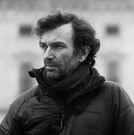shift lens
-
Recently Browsing 0 members
- No registered users viewing this page.
-
Similar Content
-
- 6 replies
- 454 views
-
- 13 replies
- 651 views
-
- 10 replies
- 521 views
-
- 3 replies
- 391 views
-
- 1 reply
- 209 views
-



Recommended Posts
Join the conversation
You can post now and register later. If you have an account, sign in now to post with your account.
Note: Your post will require moderator approval before it will be visible.